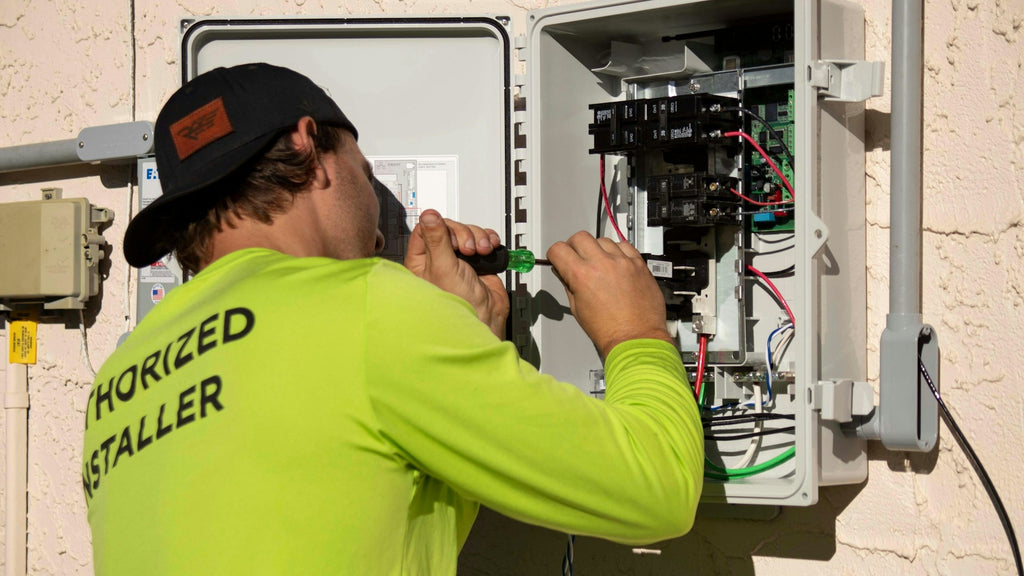Unlock the Secrets to Perfectly Repairing Your Solar Inverter - Don't Miss Out!
Solar inverters play a crucial role in solar energy systems, converting the direct current (DC) generated by solar panels into alternating current (AC) that powers our homes. However, like any technology, they can encounter problems. Understanding these issues is vital for maintaining efficiency and saving costs. This article aims to empower users with easy fixes for eight common solar inverter problems. By troubleshooting effectively, you can enhance the performance of your solar system, potentially avoiding expensive repairs and prolonging the life of your inverter. Let’s explore these common issues and their straightforward solutions.

Common Solar Inverter Problems and Easy Fixes
Recognizing issues early in your solar inverter can prevent minor problems from escalating into significant repairs. Before you delve into specific issues, it’s essential to perform basic troubleshooting. Always prioritize safety by ensuring that your inverter is powered down and that you have the proper tools at hand. Let’s look at some of the most common problems and how you can address them with ease.
1. Inverter Not Turning On
If your inverter isn’t turning on, it could be due to power supply interruptions or a tripped circuit breaker. First, check your home’s electrical panel to see if the breaker associated with your inverter has been tripped. If it has, reset it and monitor the inverter. Additionally, ensure that all connections are secure and that the inverter is receiving power from the solar panels. If these steps don’t resolve the issue, consider checking the inverter’s internal fuse or contacting a professional for further diagnosis.
2. Low Power Output
Low power output can be frustrating and may stem from various factors, including shading from trees or buildings, or dirty panels obstructing sunlight. To enhance your solar generation, first, clean your solar panels thoroughly to remove any debris or dirt. If there are shading issues, consider trimming back any overgrown vegetation or relocating obstacles that block sunlight. Regular maintenance and cleaning can significantly improve your inverter’s efficiency and ensure it operates at its full potential.
3. Overheating Issues
Overheating can lead to reduced performance or even damage your inverter. This issue is often caused by poor ventilation. To prevent overheating, ensure that your inverter is installed in a shaded and well-ventilated area. You can also check for any dust accumulation on the inverter's ventilation grilles and clean them if necessary. In extreme cases, you may need to consider relocating the inverter to a cooler, more suitable environment.
4. Error Codes Displayed
Error codes on your inverter’s display can be alarming, but they provide valuable information about what’s wrong. Common error codes might indicate issues like grid connection problems or system faults. Consult your inverter’s user manual for a list of error codes and their meanings. Most errors can be resolved by resetting the inverter or checking the connections. If the error persists, it’s advisable to seek professional assistance.
5. Battery Issues
Battery-related problems can significantly affect your solar system's performance. Symptoms of battery issues include frequent discharges, a noticeable decrease in stored energy, or physical damage to the battery. To diagnose battery health, check the battery connections for corrosion or looseness. Additionally, monitor the battery’s charge levels regularly. If you notice any irregularities, it may be time to replace the battery or consult a technician.
6. Connection Problems
Loose or damaged connections can lead to performance issues in your solar inverter. If you experience fluctuations in power output, inspect all wiring and connections for tightness and integrity. Ensure that connectors are free from corrosion and securely fastened. If you discover any damaged wires, replace them to restore optimal function. Regularly checking connections can help you avoid unexpected downtime.
7. Firmware Updates
Keeping your inverter's firmware updated is essential for optimal performance. Manufacturers regularly release updates to improve efficiency and resolve bugs. To check for updates, refer to your inverter’s user manual or access the manufacturer's website. Following the instructions to perform updates is usually straightforward, but if you’re unsure, don’t hesitate to ask a professional for help. Regular updates can enhance your inverter’s functionality and reliability.
8. Unusual Noises
Unusual noises coming from your inverter, such as buzzing or clicking sounds, can indicate potential problems. These noises might suggest loose components or internal malfunctions. To troubleshoot, carefully listen for the source of the noise and check for any visible issues. If you can’t identify the problem, it’s best to consult a professional who can safely investigate and resolve the situation. Ignoring unusual sounds could lead to more significant issues down the line.
Summary of Key Insights for Solar Inverter Maintenance
In summary, understanding and addressing common solar inverter problems can significantly enhance your solar energy experience. Regular maintenance and prompt action when issues arise are essential for optimal performance. Familiarize yourself with your solar inverter and the easy fixes discussed in this article before seeking professional help. By empowering yourself with knowledge and proactive troubleshooting, you can not only save money but also ensure your solar system operates efficiently for years to come.



